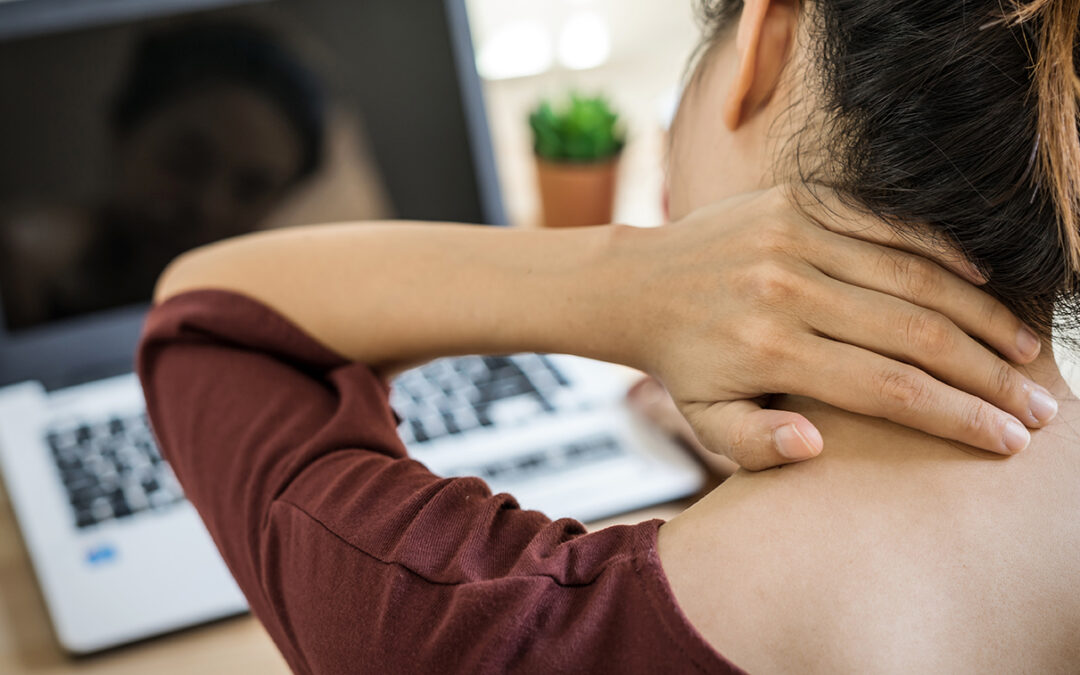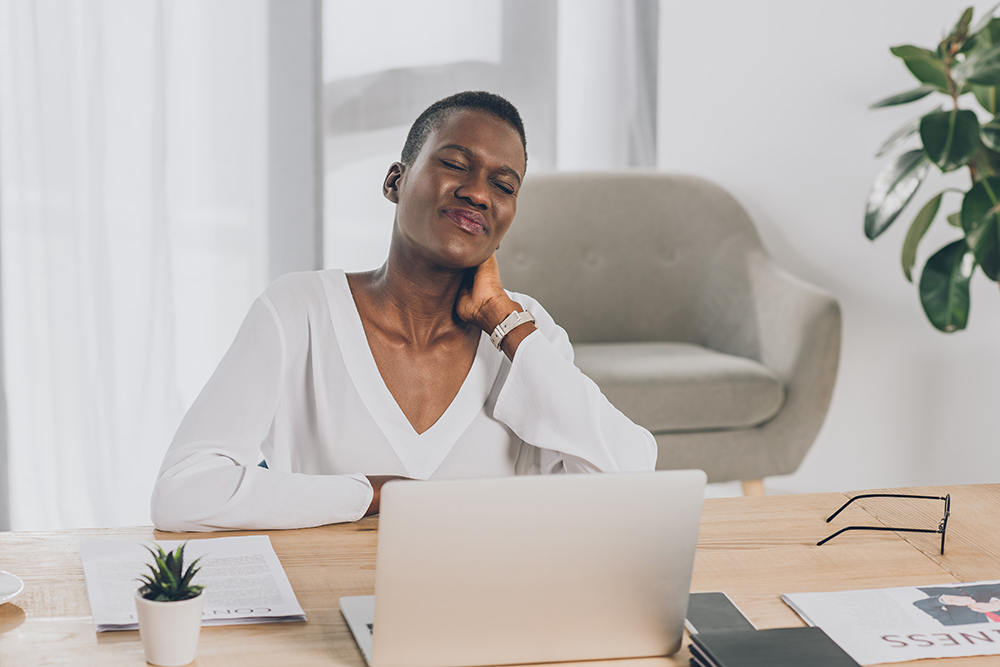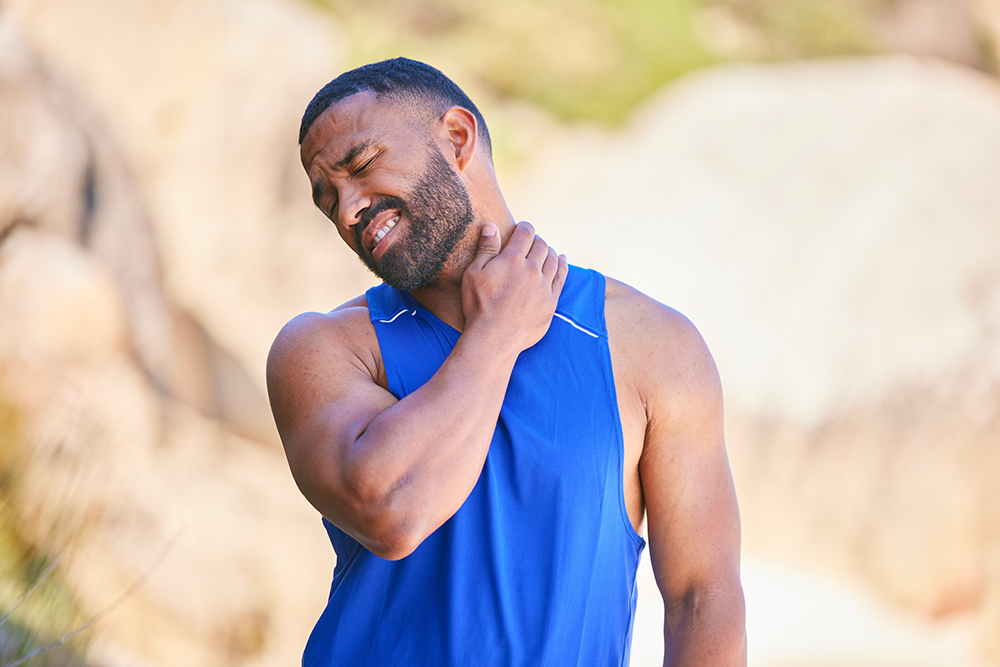Contents
While most cases of neck pain are treatable, it remains one of the top five chronic pain conditions causing disability. More than a third of people with neck pain still have low-grade symptoms or recurrences more than a year later.
Several contributing factors can raise your likelihood of dealing with neck pain at some point in your life. “Text neck” is common among people who use handheld devices. Office and computer workers and women below the 35-to-49 age group are also likely to develop neck pain from sitting with poor posture and looking at a screen all day. In any of these situations, you may end up holding your neck in one position for too long, making repetitive motions or sitting with poor posture. These are a few of the ways people often develop pain when turning their head.
This article will provide a bit more detail about these common causes of neck pain and some ways you can get relief.
How can I get rid of neck pain when turning my head?
If your neck pain is severe or it came on suddenly after a traumatic accident, you should seek medical care right away. For milder neck pain, you can try treating it at home with over-the-counter pain relievers and ice and heat therapy.
If you’ve tried these methods and your pain doesn’t go away within a week, it may be time to see a doctor or a physical therapist. A PT will start with a physical assessment to observe your neck movement, coordination and range of motion. They’ll create a personalized treatment plan to relieve your neck pain that might include gentle manual therapy techniques, stretches and exercises. Seeing a physical therapist before neck pain becomes chronic can help you lower your likelihood of degenerative issues later in life.
What causes neck stiffness and pain when turning your head?
Your care providers may not be able to pinpoint a definite cause for your neck pain. But narrowing down some potential causes may help them determine what treatments are likely to help. Musculoskeletal dysfunction, degenerative issues, repetitive movement and possible injuries are all things to consider.
Most neck pain is due to muscle strain or soft tissue injury. It is possible to develop a neck injury without realizing it at first. Long periods of inactivity and poor posture limit blood flow to your neck muscles. As tension builds in the surrounding muscles and tissue, turning your head can be painful.
Herniated discs and “pinched nerves” are also common causes of neck pain. The rubbery discs that separate the vertebrae have a soft center, and when this gets forced through the outer layer, it’s called a herniated disc. These are painful because the ruptured disc increases pressure on spinal nerves.
People who have a history of neck pain have a higher risk of developing degenerative disc disease, or cervical discogenic pain syndrome (CDPS). Contributing factors can include sudden, unexpected movements; holding awkward postures for long periods; trauma; and sports-related spine injuries.
The following conditions can all cause neck stiffness or pain when turning your head:
- Herniated disc.
- Degenerative disc disease.
- Muscle strain.
- Soft tissue sprain.
- Poor posture.
- Compressed or pinched nerve.
- Whiplash.
- Bone spur or tumor growth.
- Spinal stenosis.
- Osteoarthritis.
Ways to improve neck pain that occurs when turning your head
At-home remedies are OK for occasional neck pain. But some people start to notice patterns, like neck pain in the morning, after a long workday or when performing certain movements. A PT can assess any dysfunction in your neck movement, sensation and coordination to determine what treatments may help. They’ll also rule out any potentially serious conditions that may need a doctor’s attention.
Try the following solutions to relieve your neck pain:
- Anti-inflammatory medications — These can help reduce neck pain and inflammation in the short term.
- Heat and ice therapy — Ice reduces inflammation, and heat relaxes stiff muscles. Alternate ice packs and heating pads for about 20 minutes each.
- Physical therapy — PTs have multiple techniques and strategies that can help with neck pain depending on what’s causing it. Your PT may use manual therapy, or gentle massage-like motions that break up stiffness and stimulate blood flow. They may also guide you through physical therapy exercises and stretches during your appointment. Your treatment plan will include instructions for continuing these at home.
- Corticosteroid injections — Injections provide short-term relief, and you can only have a limited number of them in a specific area. They can help reduce pain and inflammation from acute neck pain.
Get an assessment for neck pain when turning your head at Lattimore PT
Your neck contains nerves, vertebrae, muscles and tendons that connect your head and brain with your body. It’s a sensitive area, so it doesn’t take much to cause neck pain. But because your cervical spine is so closely connected with the brain, a neck injury can become dangerous.
If you’re concerned about your neck pain, don’t wait to seek medical care. It’s important that you see a doctor or a licensed physical therapist. Lattimore Physical Therapy locations have more than 30 PTs with a full Certification in Orthopedic Manual Physical Therapy (COMT).
Ready to book an assessment? Contact our team today for more information or to schedule an appointment.



